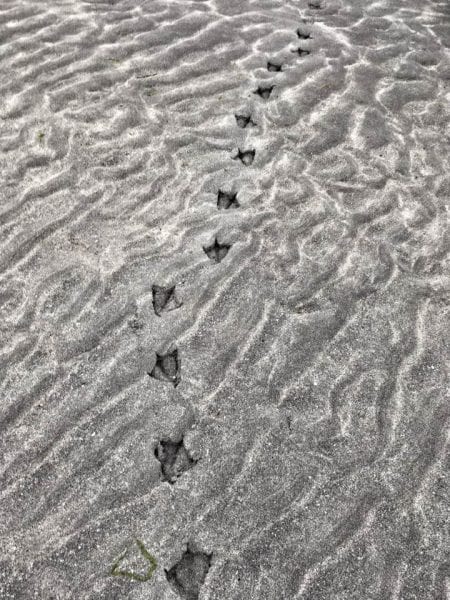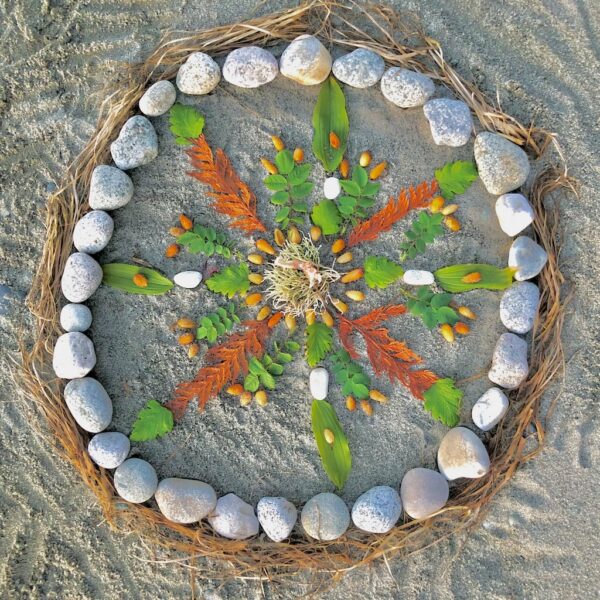 Dearest monks, artists, and pilgrims,
Dearest monks, artists, and pilgrims,
The value of travel was ingrained in me from a young age. When I was growing up in New York City my father worked for the United Nations, and we had the privilege of traveling back to Austria, where he was from, as well as other European countries and once as a teen through Asia.
As an adult I began to see the potential for deeper meaning in my journeys. I saw a difference between travel as a tourist and making a journey as a pilgrim. I often define pilgrimage as courting holy disruption. We go on a soulful, intentional journey to break ourselves open in new ways. As tourists we want everything to go according to plan.
Pilgrims welcome the opportunity for changing course and perspective along the way. Pilgrimage is an inner journey in response to outer movement. Sometimes the journey doesn’t involve any physical relocation. We might embark on pilgrimage because of illness or transition in our lives and find that we are moving into new internal territory. The old structures no longer hold. This is the practice of hearing the call—whether it was a call we desired or it came unbidden. When we respond and say yes to the journey, it takes us on, and then we become pilgrims. When life beckons we can resist at every turn, or we can recognize that things are changing and our invitation is to open ourselves.
The journey calls us to pack lightly. We discover that the old ways, habits, and patterns no longer serve us. Perhaps we feel an impulse to simplify our lives so that we have more room and resources for the new that is emerging. Travel is easier with light bags. We ask ourselves: What do we want to carry forward?
We then cross a threshold, which is a space between. The old has fallen away and the new hasn’t yet emerged. Thresholds are sacred places in the Celtic imagination where the veil between heaven and earth is considered thin. When we open ourselves to the liminal and stop grasping at the way things were, we may discover a variety of unseen presences supporting us along the way.
Embarking on pilgrimage may tempt us to seek the well-worn path, but the essence of the true inner journey is finding our own way forward. The poet Antonio Machado says that “the way is made by walking.” We put one foot in front of the other and the next step is revealed only as we are in movement. This demands a great deal of trust and listening for the whispers of the divine along the way.
The Latin root of the word pilgrim is peregrini, which means “stranger.” We go on pilgrimage to become strangers to all that is familiar, to break out of our routine vision of the world and discover something new. This requires that we stretch, travel to wild edges, and risk being uncomfortable. It is in that discomfort that we encounter new dimensions of our own capacity and new faces of the sacred.
Along the way we will encounter our own limitations again and again. We will find ourselves resisting or forgetting our spiritual practice. In the monastic tradition there is great value placed on “beginner’s mind” and the honoring of our humanity. When we stray too far from our own deep desires of the heart, we are issued an invitation to always begin again.
Ultimately the pilgrimage journey asks us to embrace mystery, to walk into unknowing, to relinquish our grasp on certainty and control. In that process we allow ourselves to be broken open to receive gifts far bigger than our own limited imaginations could ponder.
And finally the journey always calls us back home again with renewed awareness. Even if we never left home physically on pilgrimage but made the deep inner journey, we discover that home is a deep, abiding presence within us and see the familiar in new ways. We return with the gifts that we were offered along the path.
These eight practices are all part of an inner pilgrimage of discovery, where we may not even travel past our own neighborhood. But by seeing our experience with new eyes we can find ourselves and God in new ways.
Pilgrimage is an ancient call and practice. Any time we approach life in this way, we join with the millions before us who have felt drawn to wander and see life through a new lens and to trust in the unknown. We can open ourselves up to God’s work through our inner and outer journeys in the everyday. No plane tickets required.
(This article also appears in the July 2018 issue of U.S. Catholic (Vol. 83, No. 7, pages 12–17) as well as on their website.)
Please join us for our Lenten online retreat as we journey through my book The Soul of a Pilgrim together in community.
With great and growing love,
Christine
Christine Valters Paintner, PhD, REACE
Photo © Christine Valters Paintner


